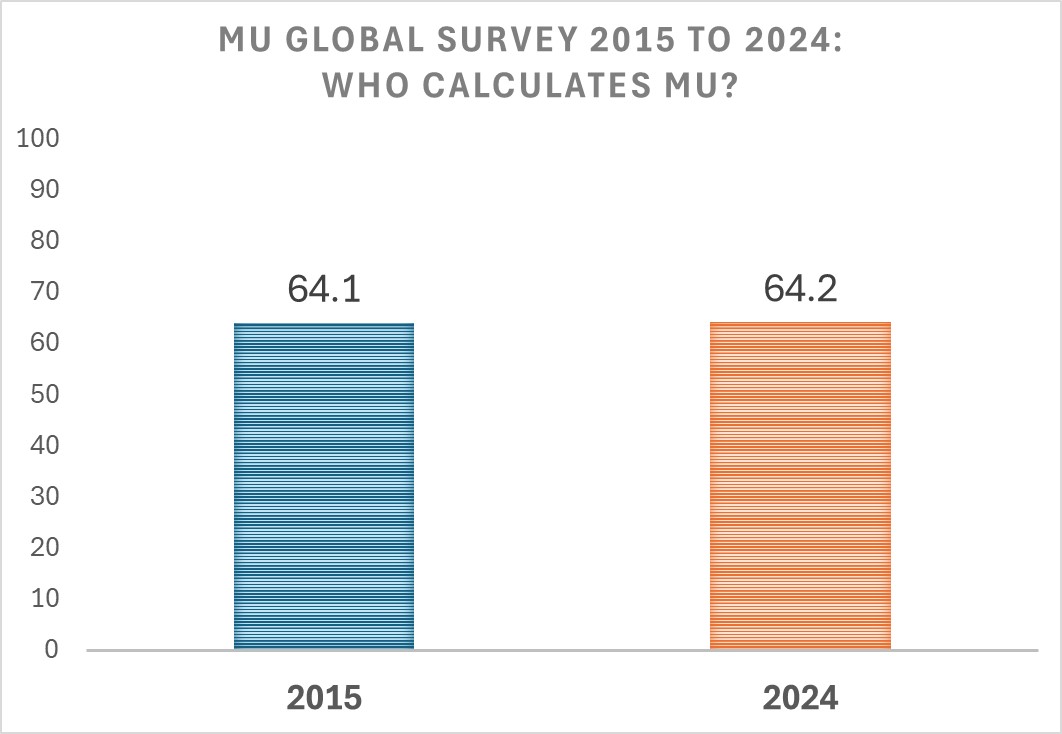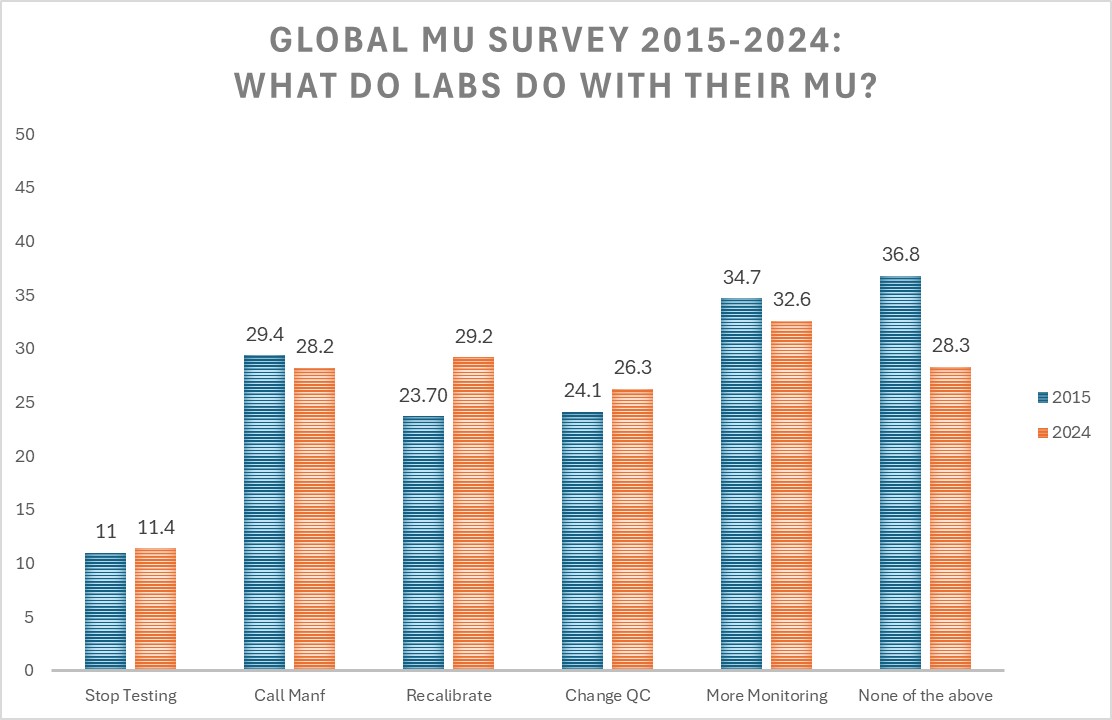ISO
MU Survey 2024: How has MU changed from 2015 to 2024?
In 2023-2024, Westgard QC conducted a survey of 1,300 laboratories around the world. But back in 2015, Westgard QC also conducted a MU survey. What are the differences? What's changed in the last 9 years in the implementation of mu? The answers willl surprise you...
Measurement Uncertainty Survey Results from 2015 and 2024: Has anything changed?

October 2024
Sten Westgard, MS
See all the Global MU Survey Results:
- The Global Practice of Measurement Uncertainty (minus the US)
- Europe sets the Standard
- The US stands alone
- Rising Asia, rising uncertainty
- Middle East, middling uncertainty
- Africa, where mu is new
- South and Latin America, a special case
Methodology: From 2023-2024, Westgard QC conducted a global survey of laboratories about their use (or not) of measurement uncertainty. The labs were solicited by the Westgard website, the Westgard e-newsletter, advertising on Facebook and LinkedIn, as well as personal appeals across social media. More than 1,300 laboratories from more than 110 countries participated in the survey.
For this article, we're going to look at the 2024 results in comparison with the 2015 survey results. The 2015 survey was admittedly smaller, with only 550 laboratory professionals from over 85 countries. Nevertheless, it's worth looking at the
Has calculating measurement uncertainty increased?
Given the hype, the debate, the studies, and the ISO mandate, you would expect that calculating measurement uncertainty would have gone up in the world. However, in our survey, it is basically unchanged.
Has Reporting of MU increased?
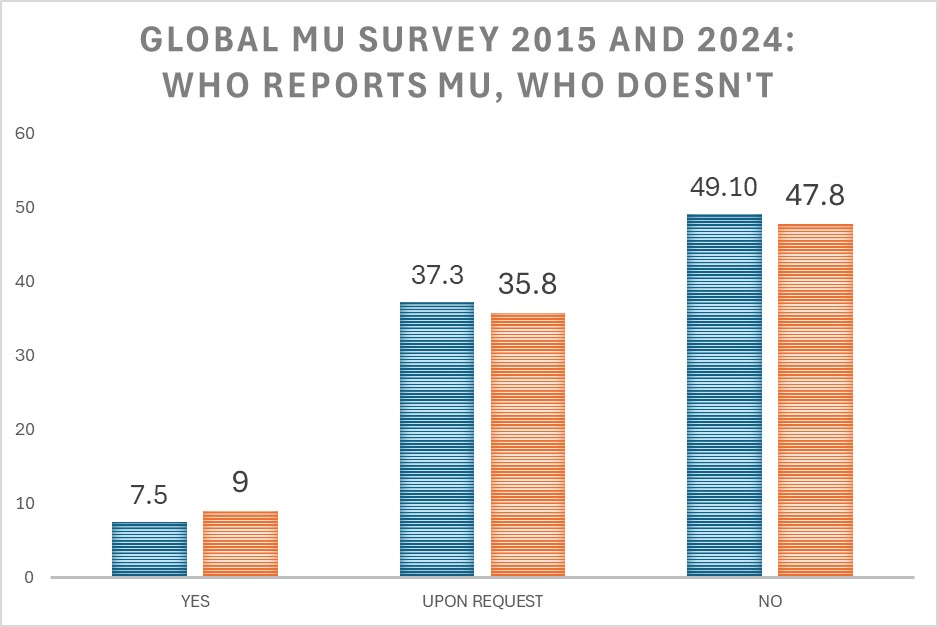
Among labs that calculate mu, only a small increase has been observed in those who report mu with their results. The number of labs that don't report mu is just under half, and appears steady over the last 9 years. Similarly, the number of labs that make it available upon request has not dramatically changed.
Have labs started to take more action based on their measurement uncertainty?
The number of labs that stop testing based on a mu calculation is essentially unchanged. The rate of labs calling their manufacturers for help or complaints seems similarly stable. The second biggest change appears to benefit the manufacturers of calibrator kits, as labs are recalibrating more often based on mu results. Labs have not really changed how often they change their QC rules, levels, or frequency because of mu. Similarly, labs have only slightly decreased their monitoring in response to mu. The biggest change of all is that fewer labs are doing nothing.
Are more clinicians asking for mu?
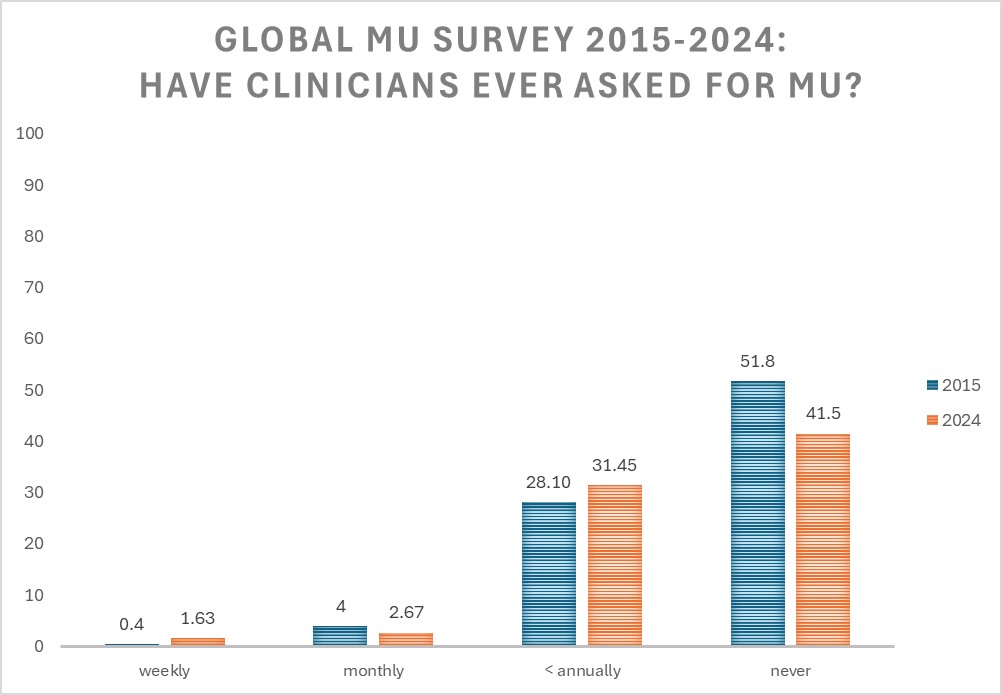
While there are more clinicians asking for mu on a weekly basis, there's a decrease of clinicians asking for mu on a monthly basis. From 2015 to 2024, the number of clinicians regularly requesting mu has remained below 5%. Slighly more clinicians are asking for mu on a less than annual basis. But the biggest change is that in 2015, over half of labs reported having no requests for mu, while that number has declined to 41.5% now. The number of requests is growing, but not at a very fast pace.
Are clinicians acting more on mu than they did in the past?
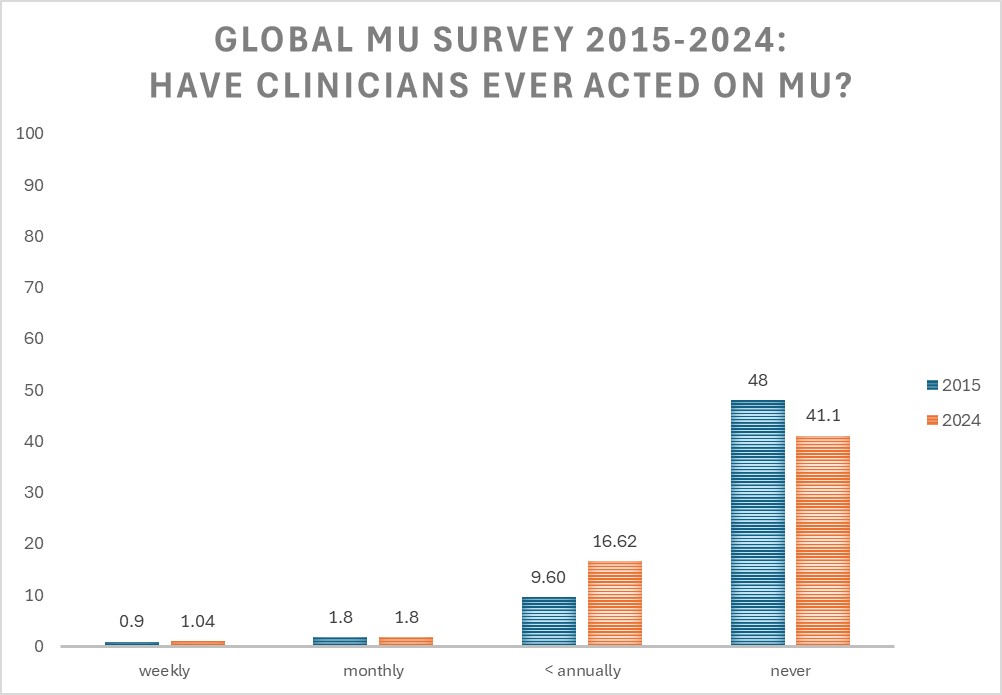
The number of clinicians regularly acting upon mu - that is, weekly or monthly - remains the same from 2015 to 2024.The encouraging finding is that in 2015, 48% of labs reported no actions taken by clinicians on mu, in 2024, that has declined to 41.1%. Much of that decline can be seen in the rise of clinicians using mu less than once a year, which increased from 9.6 to 16.6%. Having a few more labs with clinicians using mu less than once a year is not real progress.
Conclusion
it appears that the use of measurement uncertainty is essentially stable, stagnant, and extremely low. If there is an "education problem" as Dr. Sandberg noted in the 2023 Prague conference, that problem is as large as ever, and current efforts have not put a useful dent in it. Even with the ISO 15189:2022 mandate on mu, labs implement this metric in only the weakest way possible. Lip service and limp compliance is not success.

